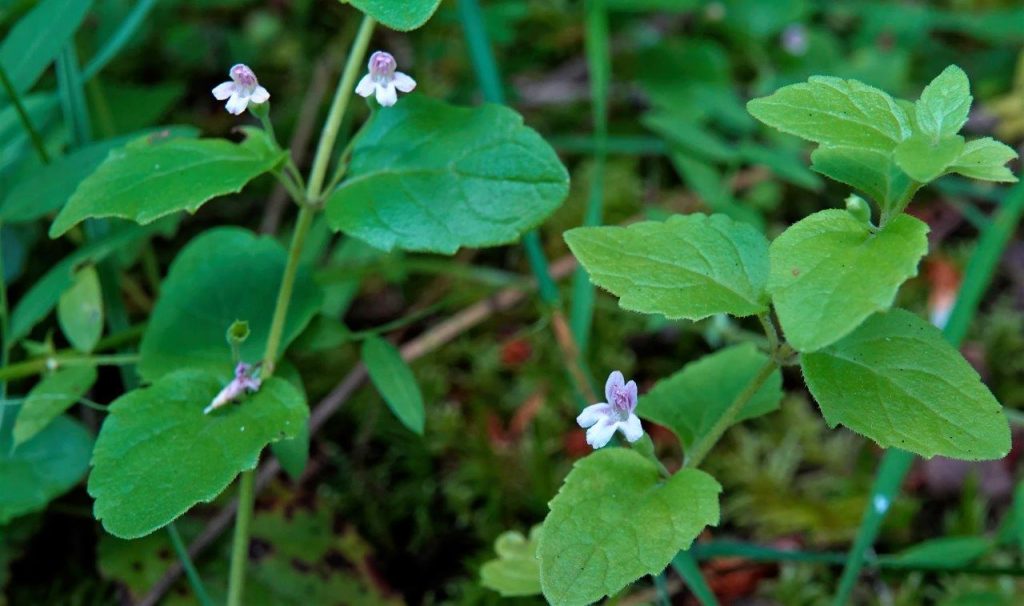Family: Lamiaceae
Common name: Yerba buena
E-flora BC: https://linnet.geog.ubc.ca/Atlas/Atlas.aspx?sciname=Clinopodium%20douglasii
Wikipedia: https://en.wikipedia.org/wiki/Clinopodium_douglasii
Yerba buena means ‘good herb’ in Spanish, and this is certainly one of the most delightful plants you will encounter. We typically find this little trailing herb in light shade, often at the margin of a forest clearing or the edge of a trail. It’s not particularly rare, but it doesn’t stand out much, so we need to keep an eye out if we want to find it.
Yerba buena is a member of the mint family (Family Lamiaceae) – you probably know many of its relatives already, such as rosemary, thyme, oregano, lavender, basil, mint. Just like those relatives, yerba buena is highly fragrant. When you find it, make sure to take a leaf and rub it between your fingers to release its scent. To my nose, it smells like a pleasant mixture of mint and lavender. As you can imagine, the leaves of yerba buena have been used traditionally for medicine and pleasure, usually in the form of a tea. Do gather a little bit of the plant and steep it in hot water to enjoy a fragrant and uplifting beverage. We have quite a bit of yerba buena on the VIU Nanaimo campus. Look in the grassy area at the edge of the woods behind building 355, and the adjoining entrance to building 356.



